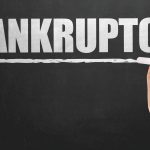STUDENT LOANS – NEW POSSIBILITIES FOR DISCHARGE
Since 1998, unlike credit card bills, medical bills and other consumer debts, student loans have not been automatically wiped away in bankruptcy. Borrowers have been required to file a separate lawsuit (called an adversary proceeding) within their bankruptcy filing, to try to do so. This process for the most part has been stressful, costly and notoriously difficult to meet the strict legal tests to succeed, and most borrowers have not even tried, unless they suffered a severe hardship, such as a disability…until now.
On November 17, 2022, the Biden Administration provided the Department of Justice (the “DOJ”) with a memorandum developed in coordination with the Department of Education (the “DOE”) regarding requests to discharge student loans in bankruptcy cases.
The “new” guidance advises DOJ attorneys to now stipulate to certain facts demonstrating that a debt would impose an undue hardship, and recommend to the Bankruptcy Court that a Borrower’s student loan be discharged if three conditions are satisfied:
(1) that the Borrower presently lacks an ability to repay the loan;
(2) that the Borrower’s inability to pay the loan is likely to persist in the future; and
(3) the Borrower has acted in good faith in the past in attempting to repay the loan.
To assist the DOJ and DOE to evaluate each of these factors, a Borrower will typically be asked to provide relevant information to the government by completing an attestation form (the “Attestation”). The Attestation requests information about the Borrower’s income and expenses to enable the DOJ and DOE to evaluate the Borrower’s present and future ability to pay.
At the present time, this analysis can only be undertaken by the DOJ and the DOE as part of a pending bankruptcy case.
Factors to be Determined
Consideration of a student loan debt discharge requires an evaluation of a Borrower’s present, future, and past financial circumstances. .
With respect to the present, the Government will rely upon the Internal Revenue Service Collection Financial Standards (the “IRS Standards”) to assess whether a Borrower can presently maintain a “minimal standard of living” if required to repay student loan debt.
With respect to the future, the Government will use certain assumptions (which are not yet clear) for determining whether inability to repay is likely to persist in the future. However even in the absence of such presumptions, a Borrower may be able to establish that their inability to pay will continue in the future.
With respect to the past, the Government has identified certain objective criteria that
evidence a Borrower’s good faith, such as making payments, applying for a deferment or forbearance after the expiration of grace periods, applying for an IDRP or other consolidation plan or loan either directly with a servicer or a qualified third party.
Finally, the Guidance also provides direction to Department attorneys regarding the treatment of a Borrower’s assets and the availability of partial discharge.
While this process is relatively new, our office is one of a limited number of firms that has access to the DOE reports necessary to provide an in-depth analysis of your student loans and an assessment of likelihood of success in an adversary proceeding
Our office always provides free initial consultations either in person, by phone or via zoom. Although, in most cases, we can make a preliminary assessment at this meeting, the only disbursement that may be necessary to be advanced after our consultation to perform an in-depth analysis (and prior to filing) is the fee to our third party vendor for the DOE report and analysis (usually under $95.00).
